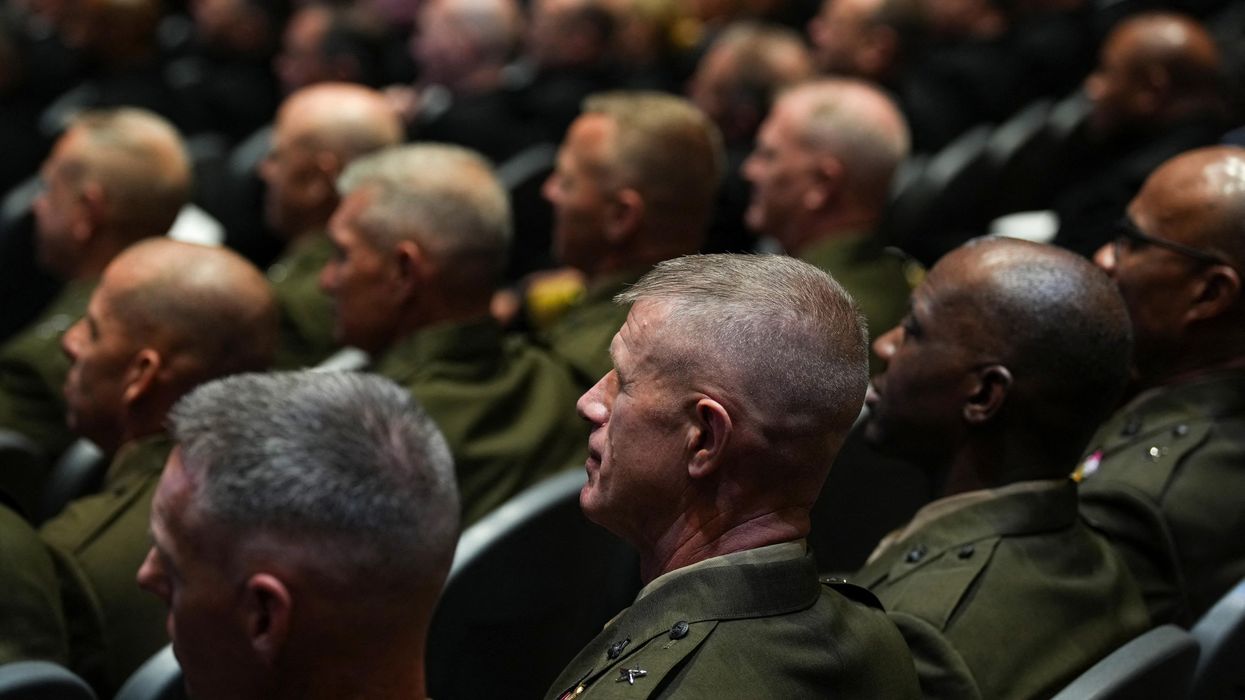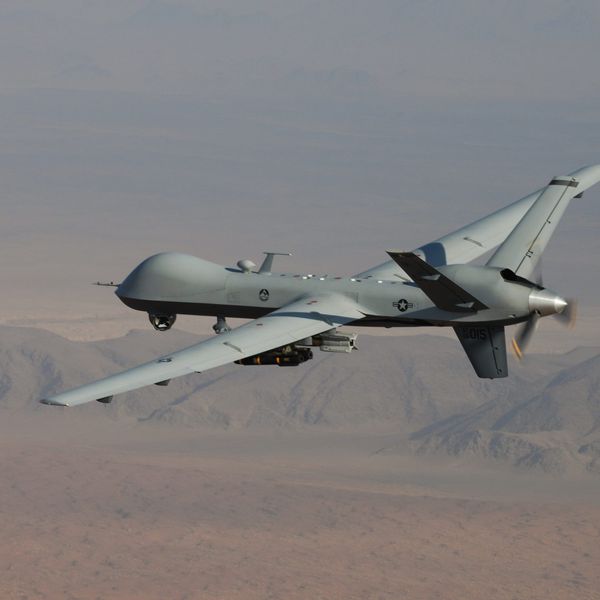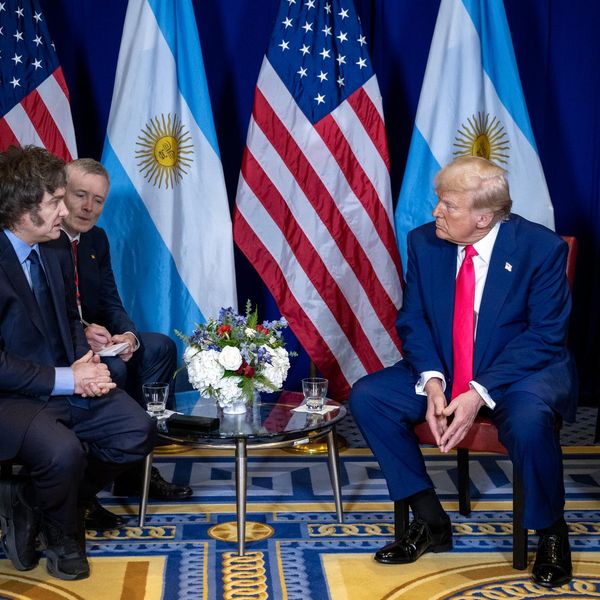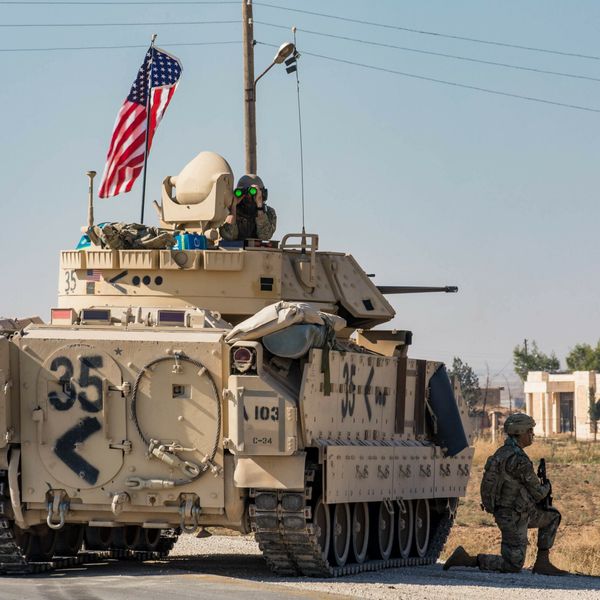These days, tech companies are publicly warming up to the defense sector. Department of Defense spending is increasingly going to large tech companies including Microsoft, Google parent company Alphabet, Oracle, and IBM. Open AI recently brought on former U.S. Army general and National Security Agency Director Paul M. Nakasone to its Board of Directors. And a growing clan of Silicon Valley-based “techno-patriots,” including the likes of Anduril’s Palmer Luckey and Andreessen-Horowitz’s Marc Andreessen, seem eager to prove that the technology industry can alleviate the United States’ geostrategic and economic weaknesses — if awarded the military contracts to do so.
But the increasingly public relationship Silicon Valley enjoys with the Pentagon is no sudden development. Rather, Silicon Valley was made by — and in the service of — a U.S. government and military eager to establish dominance over its adversaries in the Cold War and beyond. Namely, extensive and consistent post-war era government funds, and especially military contracting, overhauled the American technology industry, transforming the once-quiet region surrounding Mountain View, California into the bustling tech metropolis it is today.
A (military) history of Silicon Valley
Tech industry enthusiasts are eager to attribute Silicon Valley’s success to free market entrepreneurship, where great ideas born in suburban California garages took off through hard work and grit. In reality, regional post-war era entrepreneurs and researchers had help from a U.S. government eager to spend on research and development: in a sustained Cold War with the Soviet Union, competition in the technology, space, and arms sectors was stiff.
In time, Cold War era government R&D spending, which came primarily from DOD and NASA, crystallized what historian Margaret O’Mara describes as a “blueprint” for Silicon Valley success, where companies like Fairchild Semiconductor worked to procure outside investments, especially through government and military contracts, that nurtured and sustained growth. Through this “blueprint,” O’Mara posits that Silicon Valley-based tech companies, which had secured stability via government funding, rocked existing markets while driving the formation of new ones, thus achieving unprecedented success.
Money flows ultimately attracted universities, with nearby Stanford University encouraging graduate students and professors to launch their research and training into the entrepreneurial realm — for defense contracts. Varian Associates, which was started by Stanford-affiliated scientists and became the first Silicon Valley public offering in 1956, made microwave tubes for military purposes. Likewise, Stanford University spinoff SRI International procured military contracts to build key military applied technologies including ground- and foliage-penetrating radar systems and critical military command and control systems.
Altogether, U.S. government, and especially military, tech spending has manifested myriad landmark inventions. The internet, for example, began as an Advanced Research Projects Agency (ARPA, now known as Defense Advanced Research Projects Agency, or DARPA) research project called ARPANET, the first network of computers. Decades later, graduate students Sergey Brin and Larry Page received funding from DARPA, the National Science Foundation, and U.S. intelligence community-launched development program Massive Digital Data Systems to create what would become Google. Other prominent DARPA-funded inventions include transit satellites, a precursor to GPS, and the iPhone Siri app, which, instead of being picked up by the military, was ultimately adapted to consumer ends by Apple.
Today, the military’s economic imprint on the Silicon Valley region and beyond remains undeniable. Lockheed’s Missile and Space Company was once Sunnyvale, California’s, largest employer. The Silicon Valley region’s nine largest military contractors procured over $11 billion in defense contracts in 1990. And although defense spending in the state has declined, California remains amongst the top recipients of military dollars nationwide.
An uneasy relationship?
Despite longstanding ties, the tech industry’s relationship with the military is often depicted as uneasy or inconsistent. The relationship has indeed had low points: Silicon Valley’s incentives to pursue military contracts declined with the 1990s-era consolidation of the major “Big Five” defense companies. And tech industry workers have increasingly challenged tech-military collaborations, with, for example, Google staff successfully pressuring their employer to end its involvement with military AI program Project Maven in 2018.
Other ongoings suggest a more stable bond. After the dotcom bubble burst in 2000, defense contracts sustained the tech industry through a difficult period until 9/11 and its political aftermath precipitated the doubling of U.S. military spending (and number of military contractors) over the following decade, even as many Silicon Valley players, fearing an association with Iraq and Afghanistan’s “endless wars,” kept the military at arm's length.
Fast forward, 2020 reporting from ex-Google employee turned journalist Jack Poulson elucidates that the alleged divide between Silicon Valley and the military has been chronically exaggerated. Rather than work together openly, Poulson’s reporting uncovered that the U.S. military discreetly, yet frequently, collaborated with prominent tech companies through thousands of subcontractors through much of the 2010s, obfuscating the extent of the two sectors’ partnership from tech employees and the public alike.
Meanwhile, the Defense Innovation Unit, a Silicon Valley-based DOD outpost established in 2015 to boost collaboration with tech industry companies and especially start ups, ultimately received positive reception despite tech rank and file military malaise, and is now expanding its reach nationwide with new hubs and more funding.
Increased Pentagon demand for Silicon Valley-grown technologies, as showcased by the Defense Innovation Unit and reinforced by kinetic conflicts in Ukraine, Gaza and beyond, has only intensified the tech sector’s military fixation. It’s become less tolerant of dissent in the process: when Google and Amazon employees challenged the companies’ involvement in Project Nimbus, a joint project to supply the Israeli government with tech services, Google terminated over 50 employees for participating in the protests.
Influential players in the tech space, meanwhile, are telling workers to take sides. “We want [employees] who want to be on the side of the West. You may not agree with that and, bless you, don’t work here,” Palantir CEO Alex Karp said at the 2023 World Economic Forum in Davos, Switzerland. “We need to collaborate and cooperate with our government” under growing geopolitical tensions, Silicon Valley-based Menlo Ventures’ Venky Ganesan likewise told Fortune. “And you can’t be neutral on this.”
Detangling the military-tech web
Silicon Valley’s increasingly public relationship with the Pentagon is no spontaneous feat. Rather, the long-term, deep-rooted relationship between the institutions, spurred by massive Cold War defense and research spending and bound ever tighter by the sectors’ revolving door, ensures that advances in the commercial tech sector benefit the defense industry’s bottom line.
Tech’s positioning at the military’s beck and call is especially manifest in the goals of the Pentagon’s new Replicator weapons systems procurement initiative, which Quincy Institute Non-Resident Fellow Michael Brenes and Senior Research Fellow William Hartung describe as “produc[ing] cheaper military equipment that is also equipped with the latest in commercial innovation.”
All things considered, a true reckoning with the excesses of the military industrial complex must also force one within the tech industry. Until then, as the Biden administration’s whopping $850 billion military budget proposal for 2025 suggests, runaway military contracts, especially to tech companies and startups, will continue unabated.- 20 unhinged comments heard at an AI conference in DC ›
- Silicon Valley USA: Are these 'patriots' mere harbingers of doom? ›
- VC/DC: Silicon Valley wants its cut of US military spending ›
- Killer AI is a patriotic duty? Silicon Valley comes to Washington ›
- Big tech isn't gonna solve our problems | Responsible Statecraft ›
- New monopoly? Inside VC tech’s overthrow of the primes | Responsible Statecraft ›
- DoD promised a 'swarm' of attack drones. We're still waiting. | Responsible Statecraft ›
- Booming tech market wants govt intervention for 'national security' | Responsible Statecraft ›
















